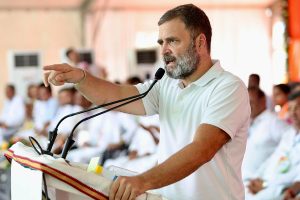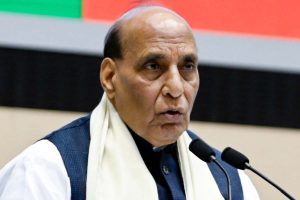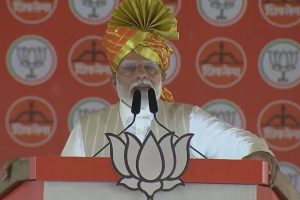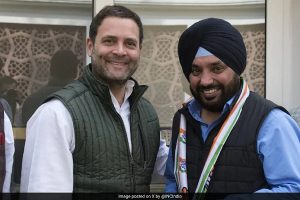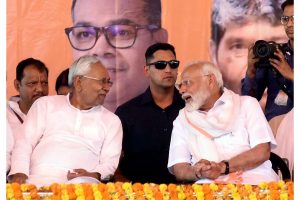Nuclear is one of the few sectors in India where the glass ceiling for women is yet to be broken.
Till now no woman has headed a power station owned and operated by the Nuclear Power Corporation of India Ltd (NPCIL) not to mention prestigious institutions like Bhabha Atomic Research Centre (BARC), Indira Gandhi Centre for Atomic Research (IGCAR) or other such organisations.
Should women have to nuke their way up?
No, says two women who are into this sector — one in the nuclear reactor field and the other working in a think tank — and now set to popularise the nuclear field amongst women under the Women in Nuclear – India banner.
“Things are changing for the better. The mindset is changing now. When the sector expands, women will start occupying the top positions,” Dr. Umasankari Kannan, Chairperson, Standing Committee of Reactor Physics, Atomic Energy Regulatory Board (AERB) told IANS.
She recently retired as the Head, Reactor Physics Design Division, BARC and was an Outstanding Scientist.
Now, there are several women in senior positions in the Indian nuclear field but as this is teamwork, no individual face comes to the fore unlike the spacecraft or the mission in charge in the case of the Indian Space Research Organisation (ISRO).
“Up to a certain position women are considered at par with men. Perhaps when it came to top positions, there seems to have been a mental block that those positions need tough decision makers and men are more suited, which is not the case,” Kannan said.
She added that women’s careers are not nuked by men just because they belong to the opposite sex.
Be that as it may, during her 37-year stint at BARC, Kannan was involved in leading the core design of advanced thermal reactors which will come into being in the future.
Special areas of expertise are in the fuel cycle, thorium utilisation, nuclear reaction measurements, experimentation for new fuel, and synergistic studies for enhanced fuel utilization.
As a Senior Professor at Homi Bhabha National Institute, she not only teaches nuclear reactor physics but has successfully guided 12 students to get their doctorate.
“It was a fulfilling career at BARC. I was involved in designing a lot of new reactors like the advanced heavy water reactor (AHWR),” she said.
According to Kannan, in the entire Department of Atomic Energy (DAE) universe (including NPCIL and others) the women workforce would be around 17-20 per cent, say about 2,000.
Like in many other sectors, women employees here too quit work owing to their family circumstances after their marriage and beyond that the attrition is almost zero as the pay and the work-life balance is good.
Senior officials in the nuclear sector had told IANS that the software boom had resulted in a fresh talent crunch.
“But after the 6th and 7th Pay Commission, the salaries have increased and talent availability is back to the usual levels. The general trend is that nobody is doing basic science courses nowadays,” Kannan said.
She was instrumental in starting a creche in BARC which was later followed by other organisations under the DAE.
Outside of the Indian nuclear establishment, there are not many women like Dr Manpreet Sethi looking at the global nuclear strategy and its impact on India and other related aspects.
“It is a male-dominated segment. I am heading the nuclear vertical in the think tank Centre for Air Power Studies. I will not say men nuked women’s career prospects,” Sethi told IANS.
According to her, much of the work done by think tanks goes unsung and unrecognised.
Sethi said when India was trying to get into the global nuclear power club, her think tank had proposed as to how India could be exceptionalised by the Nuclear Suppliers Group.
According to Sethi, India should carry out its research on small modular reactors (SMR) but opt for bigger atomic power plants.
“The country should go for 700 MW Pressurised Heavy Water Reactors (PHWR) on seeing their stable performance,” Sethi said.
Kannan and Sethi said that the Women in Nuclear – India is a new association to provide a platform for women engaged in various fields of nuclear science and technology, security and strategy in India.
“While they have been contributing through their professional expertise in this highly engaging technical field and have received recognition, this association aims to highlight their contributions in a more systematic approach and also encourage more women to participate in nuclear energy and allied fields,” Kannan said.
Sethi said that the association will also discuss the challenges faced by women and acknowledge them in the Indian nuclear sector.


